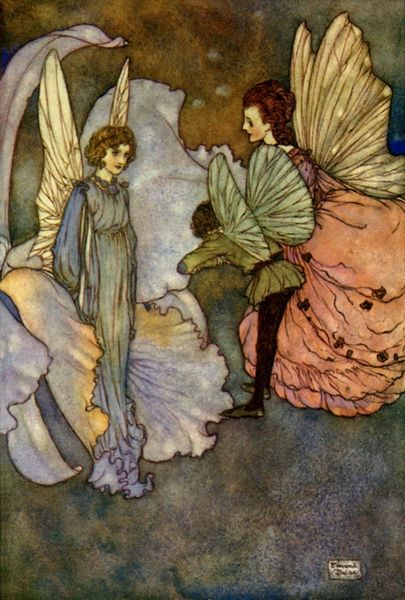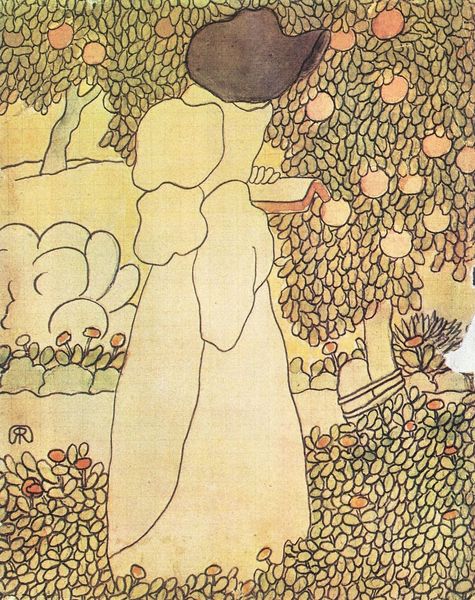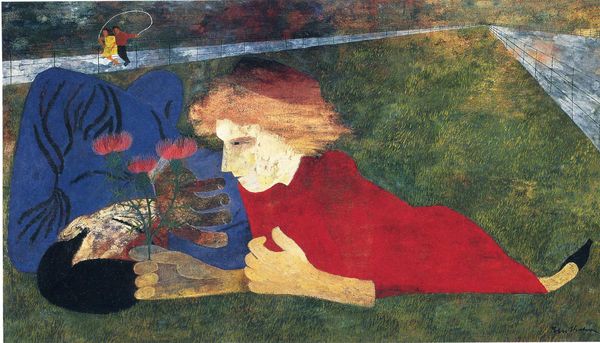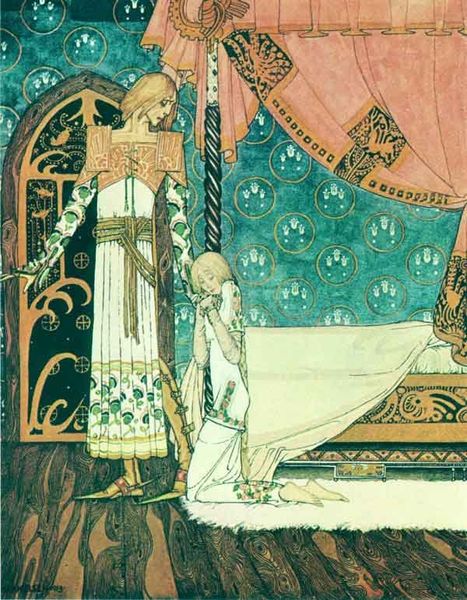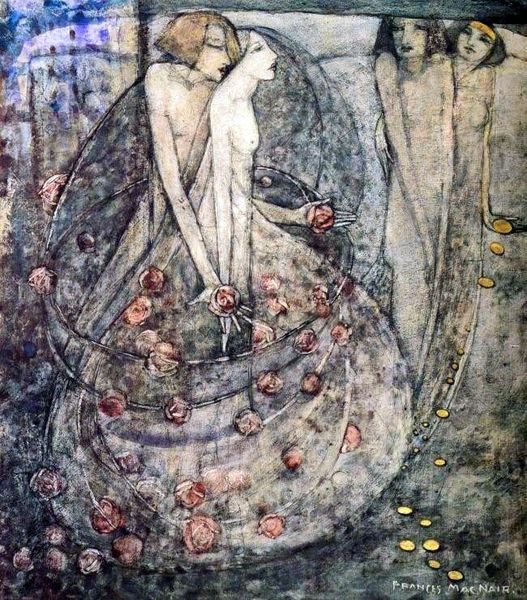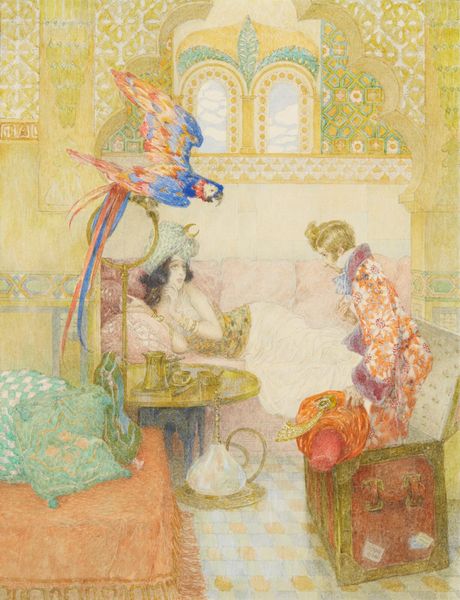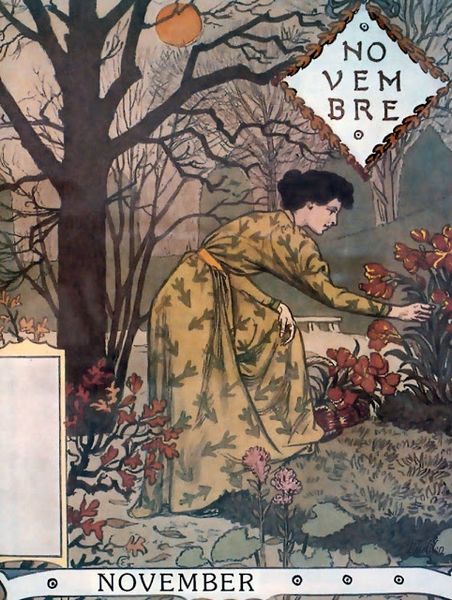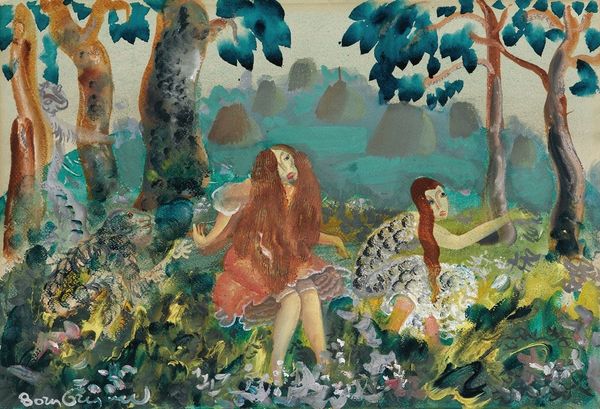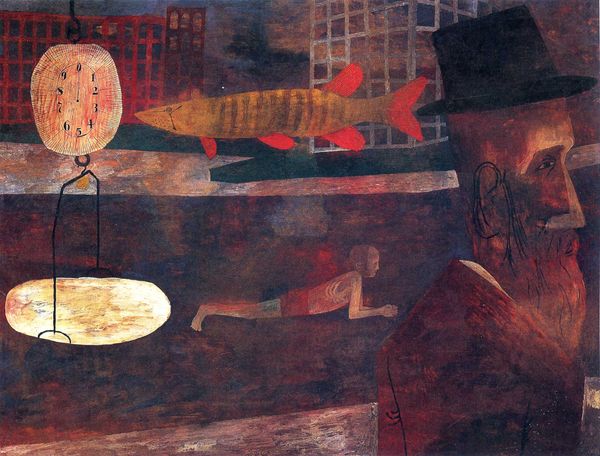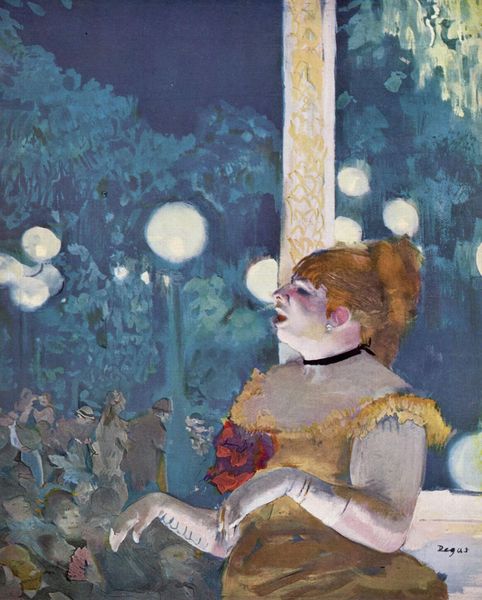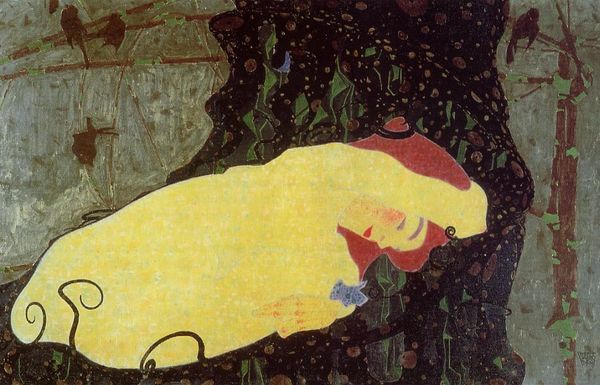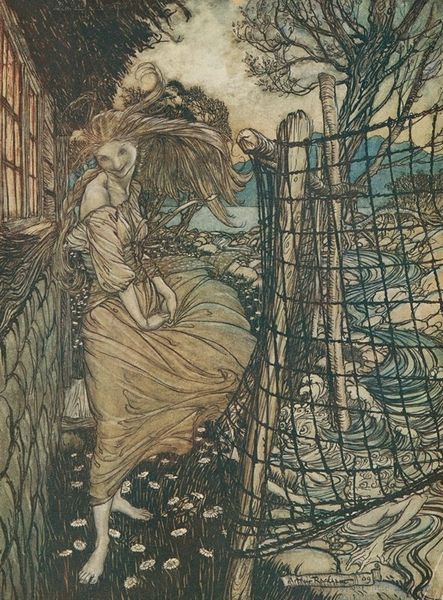
painting, watercolor
#
art-nouveau
#
painting
#
landscape
#
watercolor
#
watercolour illustration
#
genre-painting
#
watercolor
Copyright: Public domain
Editor: Here we have Eugène Grasset’s “La Belle Jardiniere – March,” painted in 1896, using watercolor. I'm struck by the illustration’s gentle mood and almost stylized approach to nature, with the woman and garden feeling very contained and constructed. How do you interpret this work, particularly in relation to the cultural context of its creation? Curator: It is tempting to romanticize this image and appreciate it merely for its decorative charm, but that would ignore its relationship to the burgeoning commercial art scene of the late 19th century. Grasset was a pioneer of Art Nouveau, a style intrinsically linked to the rise of advertising and mass media. Consider the deliberate framing: the title presented as part of the image. Doesn’t that position it more as an advertisement than an aesthetic object? Editor: Absolutely, I can see it now! The image feels like it's selling something. Was Art Nouveau, then, always viewed critically because of this link? Curator: It’s a complex issue. While some appreciated its democratizing effect – art for the masses! – others deplored its commercialization and the potential degradation of artistic integrity. This tension permeated the art world and even fueled debates around what constituted "high" art versus "low" art. Do you see any indicators that show an appreciation for institutional art such as "high" art? Editor: Yes! It almost has this classical approach where everything in the artwork serves a specific meaning. It gives us this notion that art and its culture create and affect one another, almost as a reflection. Curator: Precisely. Thinking about pieces like this helps us understand how art serves both aesthetic and societal functions. It becomes a reflection of—and an influence on—the very culture that produces it. Editor: It’s fascinating to see how the image reflects this intersection of art, commerce, and society. I'll definitely consider this within my own artistic appreciation going forward.
Comments
No comments
Be the first to comment and join the conversation on the ultimate creative platform.

